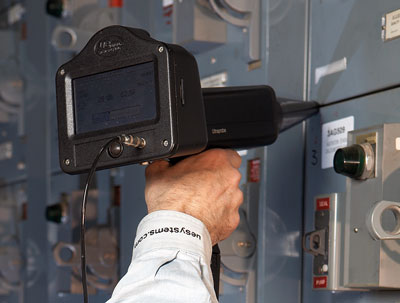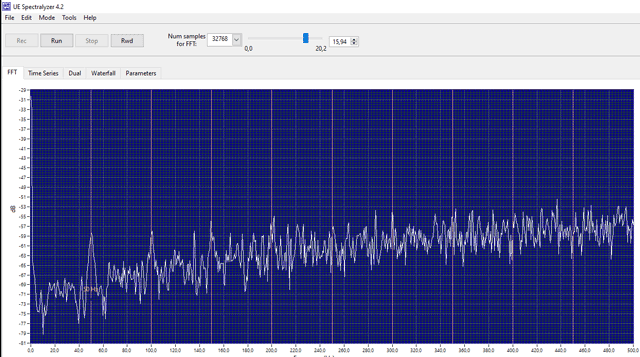Ultrasound is the most versatile predictive maintenance technology available. Typical applications include compressed air and vacuum leak detection, steam traps, valves, and various condition monitoring applications. One application in particular that has seen the most increase in usage in over the last few years is for the inspection of energised electrical components.

Ultrasound is becoming a must-have technology for electrical inspections because of how how well it complements traditional infrared inspections of electrical gear, as well as for safety. Ultrasound inspections can typically be done prior to opening energised electrical cabinets. The anomalies detected by ultrasound include corona, tracking, and arcing.
Inspecting electrical equipment
Ultrasound instrumentation can be used on almost any energised electrical equipment including metal-clad switchgear, transformers, substations, relays, and motor control centres. They can be used on low, medium, and high voltage systems.
Traditionally, inspection of energised electrical equipment has been performed by infrared cameras. However, in recent years, ultrasound instruments have been added to these inspections for various reasons, such as safety: an ultrasound inspection of electrical equipment can be performed without opening the cabinet or enclosure.
Detecting corona
Corona refers to the ionisation of air surrounding an electrical connection. Corona by nature does not produce significant heat and cannot be detected by an infrared camera. If left undetected, it can lead to more severe problems in metal-clad switchgear. By-products of corona include ozone, electromagnetic emissions, nitric acid, and ultraviolet light.

Even though corona produces little to no heat, it does however produce ultrasonic emissions. A note of importance on corona is the fact that it is only present in voltages above 1000V. Thus, if inspection is being done on voltages below 1000V, and ultrasound is detected, the inspector can rule out corona as a possible diagnosis.
When the recorded ultrasound of corona is observed in spectrum analysis software, very prominent 50Hz harmonics can be noted. Additionally, in between the 50Hz harmonics, what is referred to as frequency content is visible: harmonic activity between the more dominant harmonics. As the condition worsens, we will see less of the dominant 50Hz harmonics and the amplitude of the recorded ultrasound will become less uniform.
Detecting tracking
Tracking occurs when there is a low current pathway to ground across an insulator. This event is common where there is severe breakdown of the insulating material or loose connections. Tracking can occur in low, mid, and high voltages and is characterised as a steady buzzing sound with periodic “crackling” and “popping” sounds. Further damage is done when tracking is not corrected, and it will rather quickly lead to arcing.
The move from corona to tracking leads to a destructive path across the insulation and creates pinholes and spider web like tracking which causes surface deterioration. When visually inspected, one can see a very obvious tracking path on the surrounding surfaces. Also, a conductive cloud of ionized air surrounds the connections. Flash-over can occur once a tracking path is complete from phase to phase, or phase to ground.
Detecting arcing
Finally, arcing happens when there is a discharge to ground across an insulator. Arcing causes severe damage to equipment, operations, and people. Melting of connectors, loss of insulation and fires usually result from electrical arcs. The characteristic sound of arcing is rather erratic bursts of discharges and popping sounds. These are identifiable when looking at recorded ultrasound of arcing in the time wave form.
Conclusion
Ultrasound instruments are versatile and easy to use, and can greatly enhance inspections on almost any electrical equipment. In the end, it’s all about safety. Ultrasound inspections can be done prior to opening the energised gear to scan with infrared. If an ultrasonic emission is detected, then the proper precautions can be taken before opening the energised cabinet. Also, for those that rely on the services of an outside contractor to perform infrared scans, an ultrasound scan can be done in between the annual infrared scans to see if any emissions are heard. For best results, analysing recorded ultrasound in either the FFT or time wave form view is the recommended method of diagnosing electrical anomalies detected with ultrasound.
Chris Hallum – UE Systems Regional Manager UK & Ireland
chrish@uesystems.com | +44 (0) 7930 352 188

